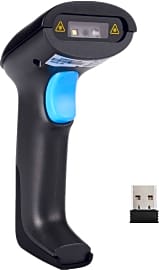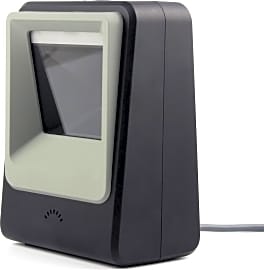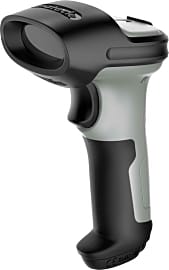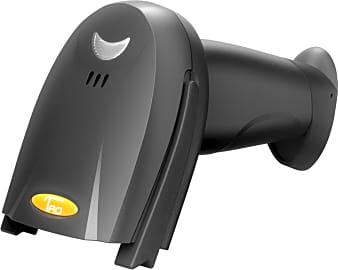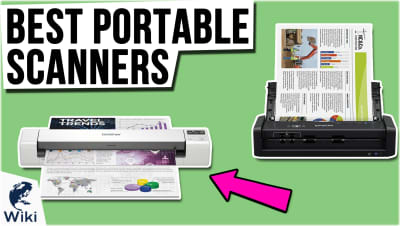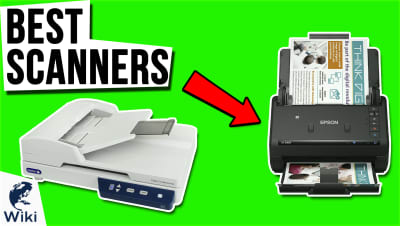The 10 Best Barcode Scanners

This wiki has been updated 39 times since it was first published in February of 2015. Ideal for stocktaking, point of sale systems, and automatic reordering, our selection of barcode scanners includes models which are capable of reading both linear and matrix codes, and are suitable for various applications, from home businesses to libraries to supermarkets to warehouses. They offer different features to suit specific needs, so there should be a device here for everyone. When users buy our independently chosen editorial selections, we may earn commissions to help fund the Wiki.
Editor's Notes
November 06, 2020:
During this update, I wanted to remove a lot of the old corded barcode scanners – especially the 1D scanners – and also introduce some wireless 2D scanners. It was somewhat harder to identify high-quality wireless 2D (matrix) scanners prior to this update, and you’ll see that every new matrix scanner I’ve added to our list has been released within the past 18 months or so.
Updates to Linear Scanners: Ultimately, I’ve removed four corded 1D scanners, none of which had wireless capabilities, and now the remaining 1D-only scanners on our list – the Inateck BCST-70, Nadamoo Wireless, TaoTronics BS030 and HooToo Wand are all wireless; and to this selection, I’ve also added the Eyoyo Mini.
Why would you buy a 1D-only scanner, when you can get models which will read both linear and matrix code types for the same price? Well, for one, most small-scale retail applications are not going to use matrix codes, which are only really common in backend industrial and large-scale packaging environments. Add this to the fact that you may find that certain linear scanners come with features that suit your specific needs. Also, some 1D scanners, like the HooToo Wand, are more reasonably priced for what they offer.
Addition of Wireless Matrix Scanners: Matrix barcodes hold a lot more information, but typically aren’t practical for front-end, retail purposes where inventories are small, product selections remain fairly consistent, and only prices vary. However, if you do need a 2D code reader, then I’ve added 3 great options - ScanAvenger 2D, Tera Pro Series and Realinn Wireless.
Other overall considerations include: offline storage capacity – most models have space for 10- to 100-thousand scans - scanning speeds, system compatibility, imaging technology – most commonly CMOS, laser and CCD - tough construction and shock-resistant technology – which are important considerations for working at heights, where drops may occur – and wireless range.
In this regard, you may find that most models have fairly similar metrics, probably with the exception of the Eyoyo Mini, which sacrifices a lot in the way of speed, range and capacity in order to achieve its exceptionally small and light design, though small differences may be important to consider, depending on your barcode scanner's specific intended purpose.
November 17, 2019:
Newer 1D/2D scanners generally have faster reading speeds, a larger storage memory, a longer range, and compatibility with a wider type/range of barcodes, amongst other features.
With that being said, I’ve replaced the Inateck BCST-20 with the newer and more efficient Inateck BCST-70. I also added the HooToo Wand (which has a multitude of reader configuration options), as well as the Nadamoo Wireless, and removed the highly overpriced (and now rather obsolete by our standards) Socket Mobile CHS 7Ci (released in May 2012), as well as the Symbol LS-4278.
The Invention Of The Barcode
Instead of making long and short horizontal dashes, they drew them downwards, making long and short vertical lines.
As with many other inventions, the barcode scanner came about because of a need. In this case, the need for speedier checkout at grocery stores. In 1948, the president of a local food chain food in Philadelphia met with a dean at Drexel Institute University. He requested that the dean initiate research on the development of a system that could automatically read product information at the checkout counter. The dean denied the request, but a graduate student named Bernard Silver overheard the conversation and found the concept interesting. He mentioned it to a friend named Norman Joseph Woodland and they decided to start work on it immediately.
Their first attempt consisted of patterns of ink that glowed in ultraviolet light. They built a working device, but the instability of the ink and expense associated with printing the patterns made the device unfeasible. It did prove that a pattern could be used to communicate product information and they continued to work on the technology. Their next idea was a variation of Morse code. Instead of making long and short horizontal dashes, they drew them downwards, making long and short vertical lines.
The initial barcode of this style consisted of four white lines printed over a dark background. The first line was a datum line, which means it is used as a reference point for the following lines. Information was coded into these patterns by the absence or presence of a line.
In 1949, Silver and Woodland filed a patent application for a "Classifying Apparatus and Method" and it was issued in 1952 as Patent US2612994 A. In their patent application, both linear and circular printing patterns were described.
The technology wasn't used commercially until 1966 when the National Association of Food Chains (NAFC) asked manufacturers to develop equipment to expedite the checkout process. The first bullseye patterned scanning system was installed in a Kroger grocery store in 1967, but it didn't catch on as it was problematic and wasn't standardized for the industry.
In 1969, the NAFC approached Logicon, Inc to develop a standardized barcode system and in 1970, the Universal Grocery Products Identification Code (UGPIC) was created. This Universal Product Code (UPC) followed three years later, which is the coding system that we still use today. The first UPC scanner was installed at Marsh's supermarket in Troy, Ohio, and the first product was scanned on June 26th, 1974.
The Technology Behind Barcode Scanners
There are three main parts of a barcode scanner: the illumination system, the sensor, and the decoder. First the illumination system lights up the barcode with a red light. Then the sensor detects the amount of reflected light. Since light reflects off the white portions of a barcode more intensely than from the black areas, the sensor can detect the pattern. The sensor then generates an analog signal and sends it to the decoder.
The decoder interprets the analog signal and turns it into a digital signal, which is used to validate the barcode before it is deciphered and converted into ASCII text. The converted text is then formatted and delivered to a computer software system, which holds a database of information such as the cost, the maker, and number of units sold.
All barcode scanners use one of three illumination methods: liner multiple LEDs, laser diodes, or LED imagers, and each illumination method requires a different type of sensor. No matter which type of illumination method and sensor is used, the output is always the same with high reflection intensity from the white spaces and low intensity from the black spaces.
Interesting Facts About Barcodes
Barcodes may seem like a commonplace, and perhaps slightly boring thing, but they have had some interesting uses in the past as well as been at the center of a surprising controversy. While most of us associate them with consumer goods we buy like foods, books, movies, and electronics, and that's how they were originally intended, that isn't how they were initially used. Their first use was labeling railroad cars with car and company information. Barcodes were established as the standard Automatic Car Identification system for the Association of Railroads (AAR) starting in late 1967 and by 1974, 95% of the fleet had labels. Unfortunately dirt greatly affected accuracy and the system was abandoned by the late 1970s.
Each of these cards represented a player, a powerup, or an enemy.
Barcodes were also at the center of a satanic controversy. The bit patterns at the beginning, middle, and end of barcodes resemble the way the number 6 is coded. In essence, this means that each and every barcode technically contains the number 666, which is the Bible's "mark of the beast". The UPC developer George J. Laurer even had to go so far as to issue a public statement denying the accusation and stating that it was nothing more than a coincidence.
If you are a gamer, you might appreciate that the barcode was used in one of the earliest mobile gaming systems. It was called the Barcode Battler and came with a number of cards with barcodes on them. Each of these cards represented a player, a powerup, or an enemy. The barcodes would be swiped to initiate battles. It never caught on in Europe or America, but it was extremely popular in Japan.


